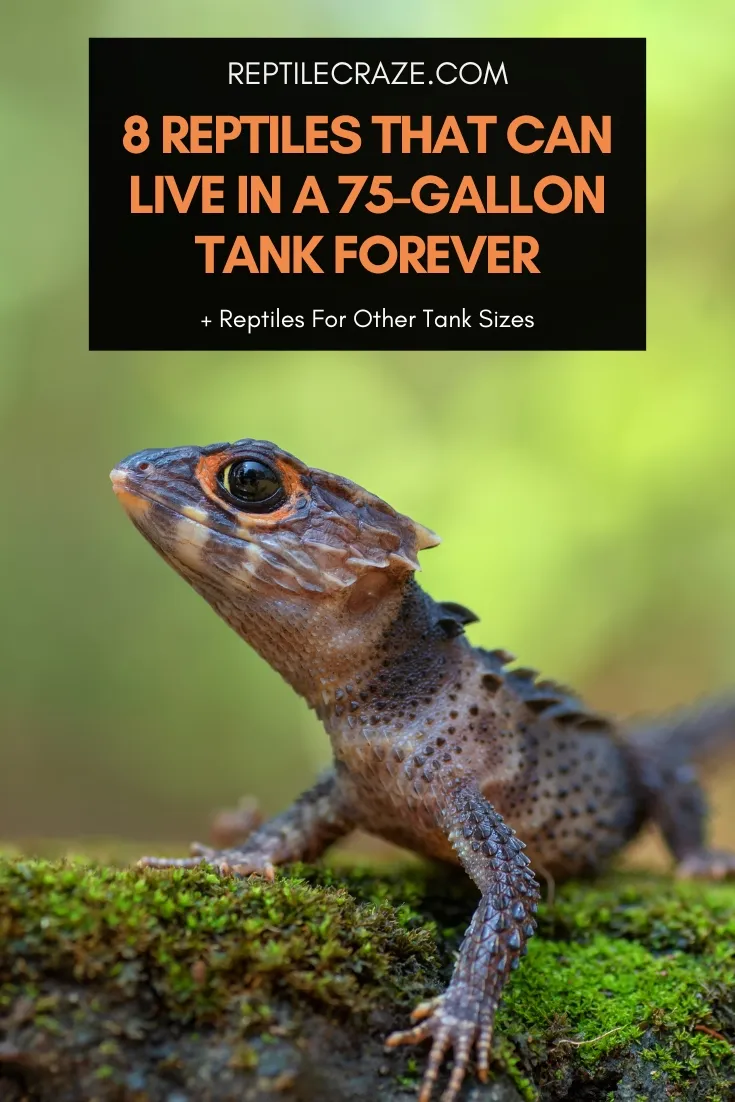
Figuring out
The
This article will introduce you to several reptiles you can permanently house in a 75-gallon
Table of Contents
What Reptiles Are Suitable For A 75-Gallon Tank ?
| Reptile | Recommended Juvenile) | Recommended | Community |
| Bearded Dragon | 20 to 40 Gallons | 75 to 120 Gallons | No |
| Blue Tongue Skink | 20 to 30 Gallons | 55 to 75 Gallons | No |
| Corn Snake | 10 to 40 Gallons | 40 to 75 Gallons | No |
| Spotted Python | 10 to 20 Gallons | 40 to 75 Gallons | No |
| Uromastyx | 20 Gallons | 55 to 75 Gallons | Yes |
| Painted Agama | 10 to 20 Gallons | 40 to 75 Gallons | Yes |
| Rankin’s Dragon | 20 to 40 Gallons | 40 to 75 Gallons | Yes |
| Crocodile Skink | 5 to 10 Gallons | 30 to 75 Gallons | Yes |
Before we start going through our reptiles compilation, you should note that the list featured here pertains to
The enclosure dimensions for hatchlings and juveniles are typically smaller, allowing the inhabitants to reach
Also, for reptiles in communities, hatchling and juvenile
Now that we’ve highlighted those details let’s move on to our riveting reptile roundup!
1. Bearded Dragon (Pogona vitticeps)
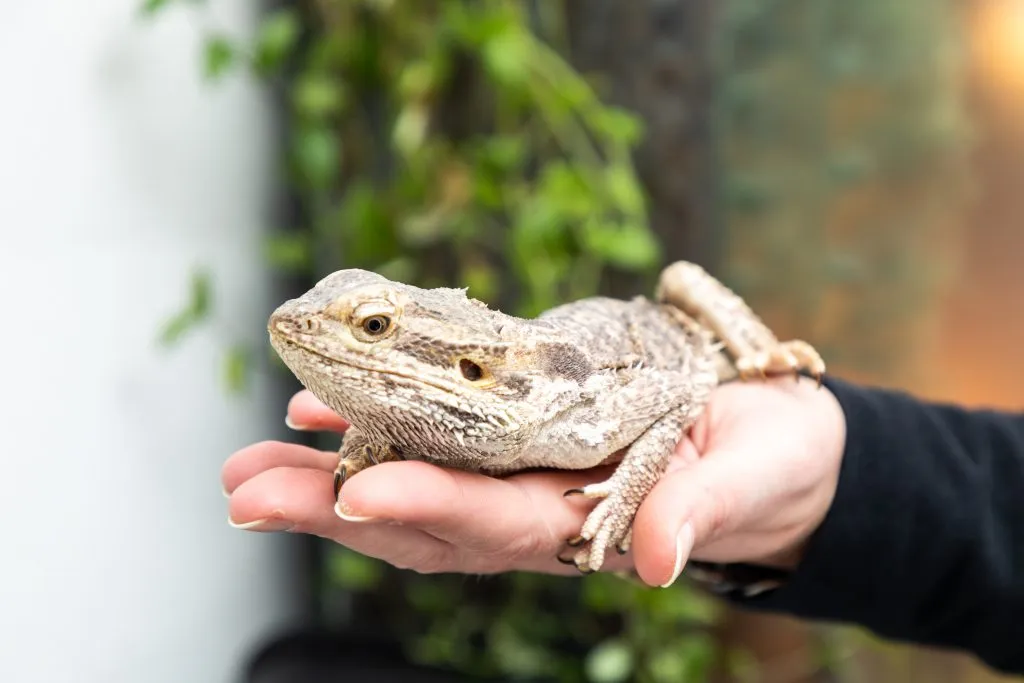
Bearded Dragons, lovingly called Beardies, are native to the arid regions of Australia. These are ground-dwelling lizards, but they like climbing low branches and rocks to soak up the sun.
These lizards aren’t too difficult to acquire as popular pet options in the reptile community.
These lizards start off at 3 inches as babies or hatchlings, and as juveniles, they can reach lengths of 16 inches. That’s why the vivarium dimensions for hatchlings and juveniles range from 20 to 40 gallons.
Also note it’s not advisable to keep more than one Beardie per
Adult Bearded Dragons can measure anywhere from 16 to 24 inches and like having plenty of room to explore. That’s why the recommended
If you would like to learn more about bearded dragons, read our bearded dragon care guide!
2. Blue Tongue Skink
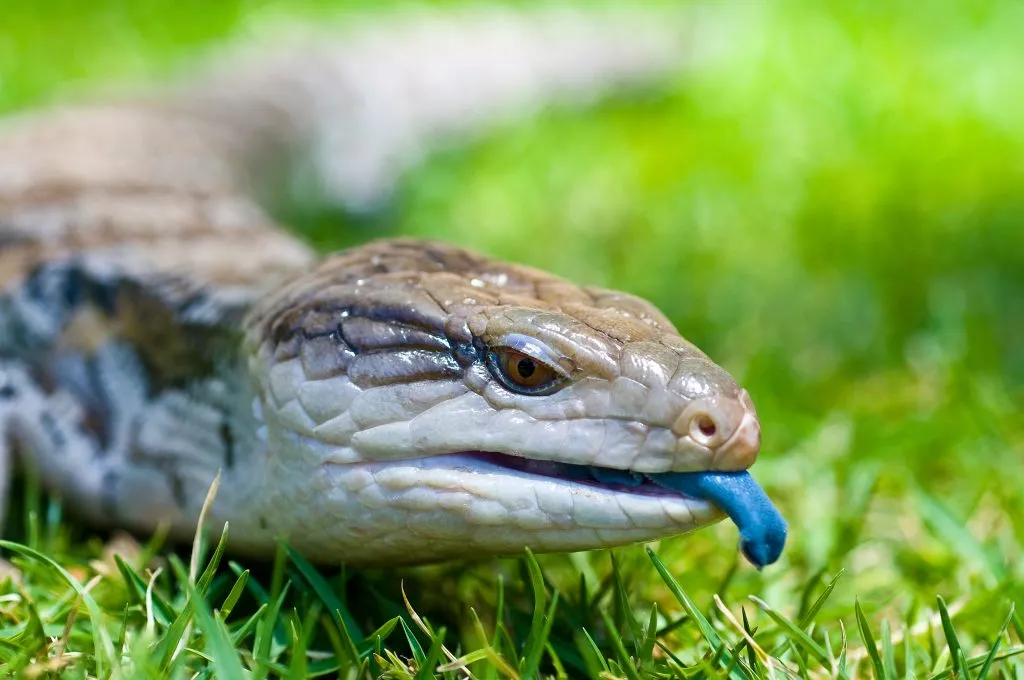
Blue Tongue Skinks rank as popular reptile pets. They’re renowned for their blunt, triangle-like heads, blue tongues, and mild manners.
If you’re a fan of this lizard species, you’re in for a treat because they’re pretty easy to handle and good around kids.
As hatchlings, Blue Tongues measure around 5 inches and reach up to 12 inches in length as juveniles. You’ll need a 20 to 30-gallon
On the other hand, an adult Blue Tongue can grow as big as 24 inches. As such, they need a 75-gallon
It’s also best to note that Blue Tongue Skinks are territorial and belong in a single-specimen setting.
Interested in getting a blue tongue skink? Our blue tongue skink care guide will show you everything you need to know about them.
3. Corn Snake (Pantherophis guttatus)
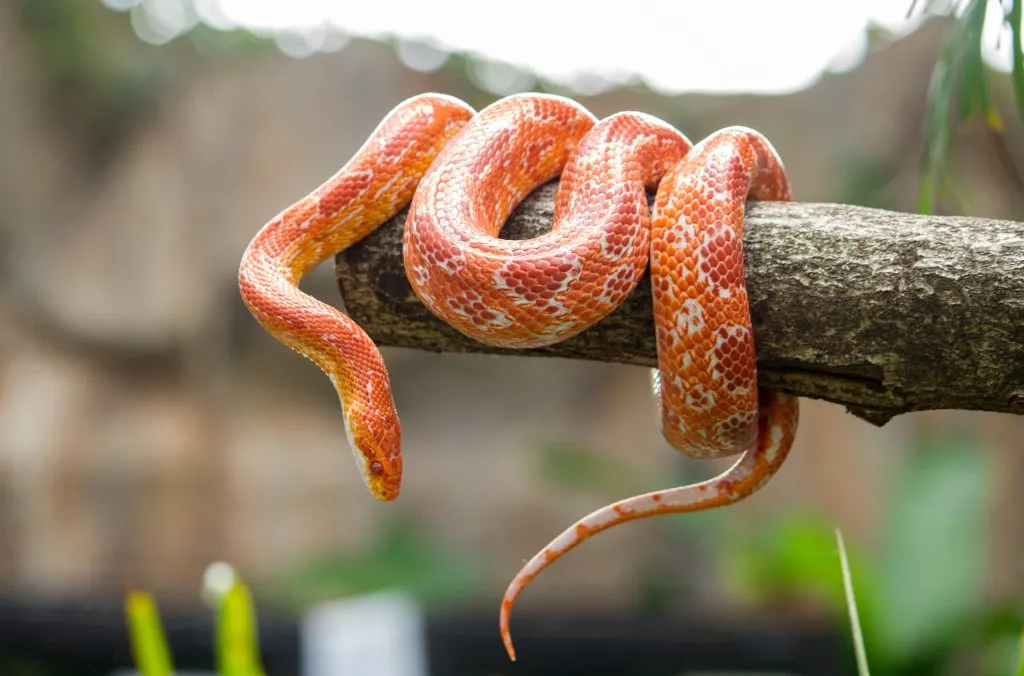
Corn snakes (aka Red Rat Snakes) are a hardy reptile species that can live up to 20 years in captivity. They’re also gentle and handled easily, making them sought-after as pets among reptile lovers.
Hatchlings are a petite 8 inches in size, whereas juveniles can touch the 35-inch range. During this stage, it’s best to house them in 10 to 40-gallon reptile tanks.
Once the snakes reach adulthood, you can expect them to grow to a whopping 60 inches. That makes them the perfect candidate for a spacious 75-gallon enclosure (with a screen lid, of course).
4. Spotted Python (Antaresia maculosa)
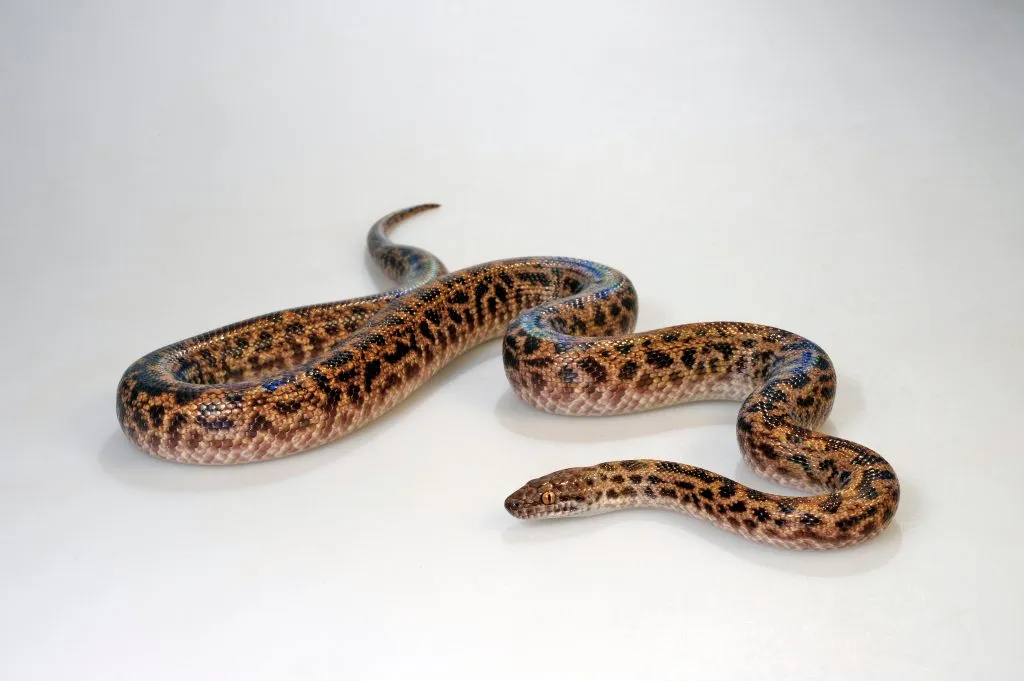
If you’re fascinated by pythons but didn’t think you could keep one because of their bulky size, you might want to look into Spotted Pythons.
Sometimes affectionately termed ‘pygmy pythons,’ these snakes are surprisingly streamlined and have a spear-like heads.
Spotted pythons have humble beginnings and measure 9-24 inches during their hatchling to juvenile phase. Snake owners can resort to 10 or 20-gallon tanks during this time without any hassle.
However, once Spotted Pythons mature, you can expect your snake to transform into a 48-inch beauty.
At this point, you should upgrade your
5. Uromastyx
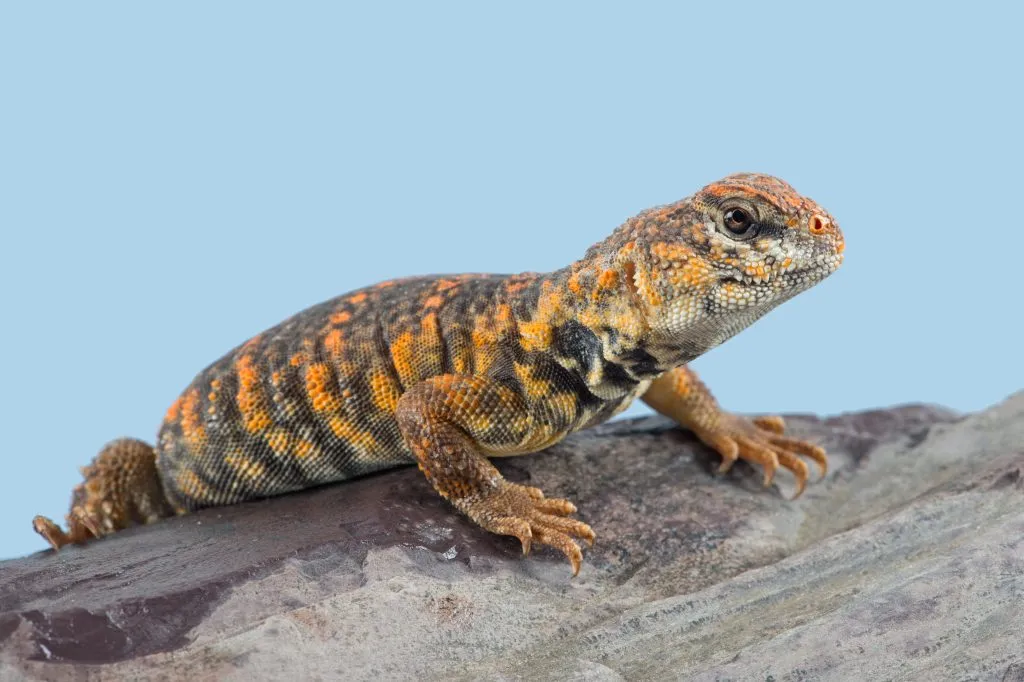
The Uromastyx family of lizards is incredibly versatile. Currently, there are around 15 recognized Uromastyx species, with the Ornate Uromastyx being the most popular.
Suffice it to say these lizards vary in size and can grow from 10 to 36 inches as adults, depending on their species.
Experts recommend housing juveniles in a
Adults require spacious settings, and you can create a female-only
Would you like to learn more about Uromastyx? Read our Uromastyx Care Guide!
6. Painted Agama (Stellagama stellio)

If you’re big on Bearded Dragons, but prefer a community setup to a single specimen
But they’re unique in that they can change color based on their mood, from brown to a beautiful, deep blue. Painted Agamas are native to arid regions and like living in social groups.
These reptiles measure approximately 12-14 inches upon adulthood, and a single Agama does quite well in a 40-gallon
In contrast, if you’re considering housing multiple Painted Agamas (a female-only group of three lizards is recommended), then a 75-gallon
7. Rankin’s Dragon (Pogona henrylawsoni)
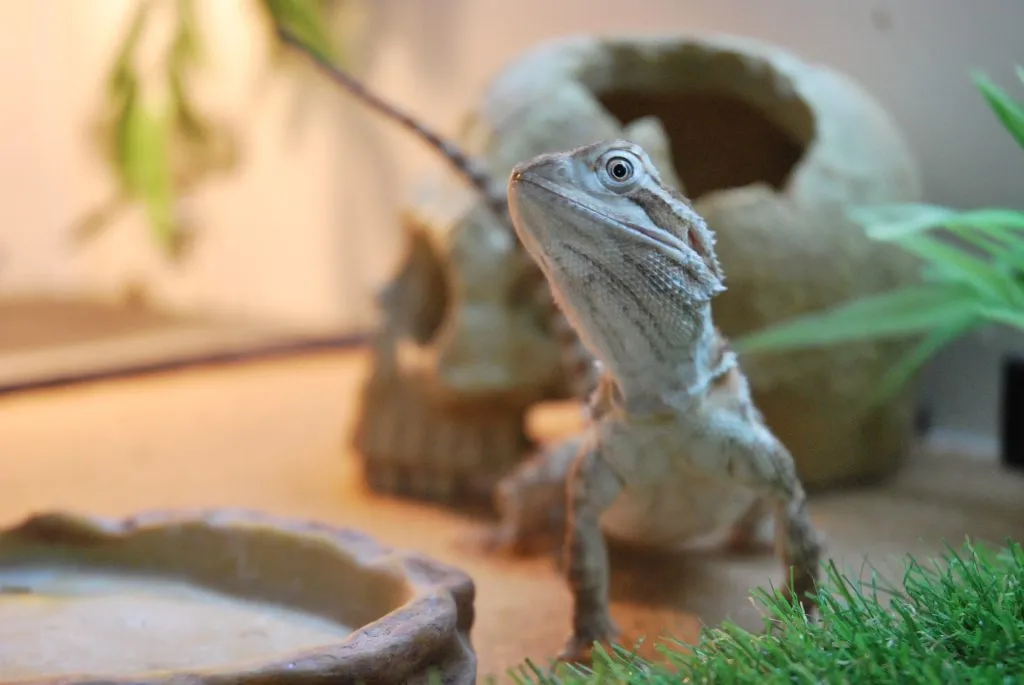
Rankin’s Dragons are also known as Pygmy Dragons and Black Soil Dragons. They’re native to Queensland, Australia and like warm, dry settings.
Pygmies are the smallest of the Pogona genus and cohabit easily with their own kind. Although, it’s best to house one male and three females or a female-only enclosure.
Despite their small size, Rankin’s Dragons can measure 12 inches when fully mature. As such, you can house a single Pygmy in a 40-gallon enclosure. A 75-gallon
Another thing to remember is that these lizards love climbing, which is why you should look for a
8. Red-Eyed Crocodile Skink (Tribolonotus gracilis)
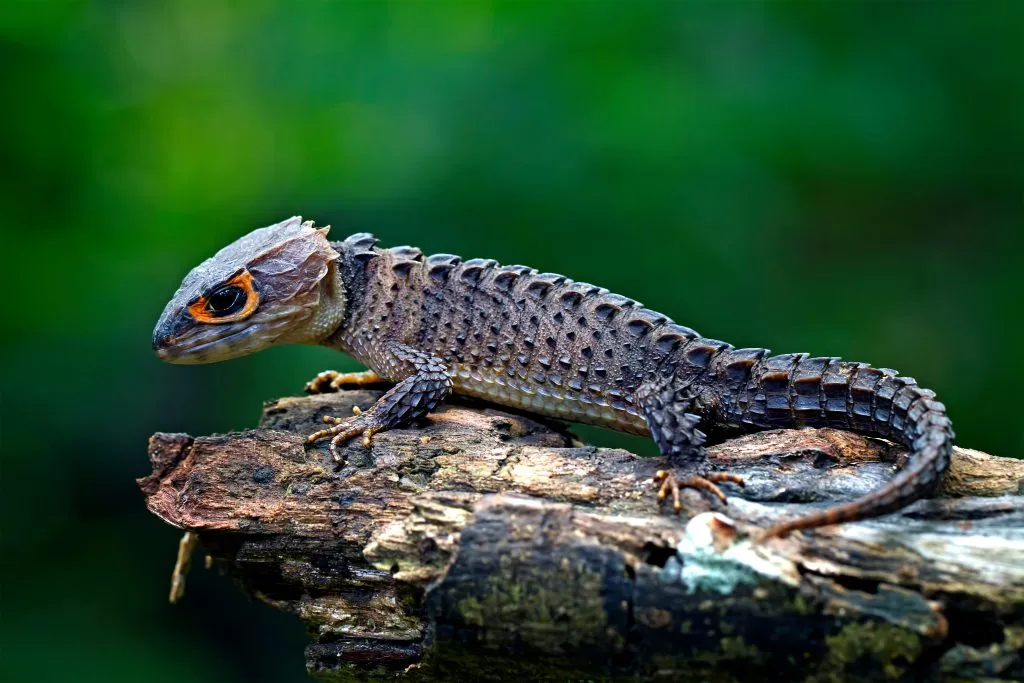
The Red-eyed Crocodile Skink, or simply Crocodile Skink, is an extraordinary-looking lizard native to New Guinea. These remarkable reptiles get their name thanks to the pointed, armor-like dorsal scales that give the appearance of crocodile skin.
They also have bright orange scales surrounding their eyes, making them impossible to miss. Adult Crocodile Skinks are about 10 inches long, and a single lizard can comfortably live in a 10-gallon
But the good news is, you can keep these lizards in a community
Housing two Crocodile Skink males is a bad idea as they will get territorial. Up to three or four females can cohabit as long as they have enough space to maneuver and not run into each other very often.
This is where a 75-gallon
How Big Is a 75-Gallon Tank ?
One aspect that makes selecting enclosures for reptiles confusing is that dimensions can differentiate despite having more or less the same capacity.
That’s how some sizeable and miniature reptiles can still fit comfortably in 75-gallon tanks.
Here’s a table containing a few of the more popular dimensions you’re likely to find in reptile tanks with a 75-gallon capacity.
75-Gallon Reptile Tank Dimensions
| Length | Width | Height |
| 48 inches | 18 inches | 21 inches |
| 49 inches | 19.5 inches | 21.25 inches |
| 24 inches | 24 inches | 30 inches |
| 48 inches | 15 inches | 24 inches |
| 30 inches | 30 inches | 18 inches |
Conclusion
A 75-gallon
Besides that, there are plenty of options in terms of dimensional range.
So, if you’re hoping to set up a permanent reptile enclosure, our list can help you create the perfect setup with a scaly friend that’ll stay with you for a long time.
Just ensure you complete the ideal environment for your lizard or snake inside the
Interested in reptiles for other
- Enchi Ball Python: A Unique and Stunning Morph of Python regius - March 27, 2025
- Emerald Tree Monitor: The Enigmatic Green Guardian of the Rainforest - March 26, 2025
- The Egyptian Cobra (Naja haje): A Fascinating Serpent - March 25, 2025
